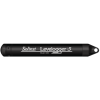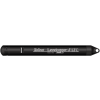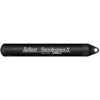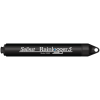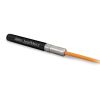Solinst Readout Unit (SRU)
The Solinst Readout Unit (SRU) is a field-ready device designed to take and display instant water level readings from a deployed Solinst datalogger, as well as allow the simple download of stored data.
Features
- Record and save an independent real-time logging session
- Barometrically compensate real-time readings using internal barometer
- Compatible with Levelogger 5 and Edge Series Solinst dataloggers
- Free ground shipping
- Expedited repair and warranty service
- Lifetime technical support
- More
Overview
The Solinst Readout Unit (SRU) is an in-field device designed to take and display instant water level readings from a deployed Solinst datalogger. When connected, users can select a real-time sampling rate and start a real-time monitoring session independent of the datalogger’s internal logging mode.
Real-Time Data
Real-time logs can be saved in the SRU memory. The SRU has an internal barometer, which provides the option of showing and saving real-time water level readings corrected to ambient air pressure. The SRU also functions as a data download and storage device with a robust flash memory. Saved files can be trasnferred to a PC. The SRU allows users to access information about the connected datalogger’s status, including battery level, memory, serial number, firmware version, and logging mode, as well as the SRU status.
Connections
The SRU connects to a Levelogger’s Direct Read Cable, a LevelVent Wellhead, or AquaVent Wellhead connector cable. The LCD screen contrast is adjustable to ensure easy viewing in any field condition. To transfer data files to a PC, the SRU connects using a USB cable. Levelogger Software is used to download, view, export, delete data and set up dataloggers. Through the Software, the SRU has upgradable firmware, which allows for future improvements and compatibility with new dataloggers.
Materials: ABS enclosure, 316 stainless steel connector, silicone rubber cover
Operating Temperature: -20ºC to +50ºC
IP Rating: IP64 (dust and splash resistant)
Battery: Standard 9V replaceable battery
Battery Life: Up to 2 years
Memory: 20 full LTC logs or 18 full LT logs (~1.8 million LTC readings or 2.7 million LT readings)
Size and Weight: 8.9 cm x 3.2 cm x 14.5 cm (3.5” x 1.3" x 5.7”) 351 grams ( 12.4 ounces)
Internal Barometer Accuracy: ± 0.2 kPa
Compatible With: 5 Series and Edge Series Solinst dataloggers
- Solinst Readout Unit (SRU)
- USB-C to USB cable
In The News
From Paddles to Phytoplankton: Studying Vermont’s Wildest Lakes
For six months of the year, Rachel Cray, a third-year PhD student at the Vermont Limnology Laboratory at the University of Vermont, lives between a microscope and her laptop, running data. For the other six months, she is hiking and canoeing four of Vermont’s lakes, collecting bi-weekly water samples. Cray studies algal phenology across four lakes in Vermont, US, that have low anthropogenic stress—or in other words, are very remote. Funded by the National Science Foundation Career Award to Dr. Mindy Morales, the lakes Cray researches part of the Vermont Sentinel Lakes Program, which studies 13 lakes in the area and, in turn, feeds into the Regional Monitoring Network, which operates in the Northeast and Midwest US.
Read MoreReimagining Water Filtration: How Monitoring and Science Enhance FloWater Filtration Systems
Over 50% of Americans think their tap water is unsafe , according to the Environmental Working Group (EWG). Other recent surveys have found that number to be as high as 70% of persons surveyed. Whether due to increased public awareness of water quality issues or confusion about how municipal water sources are regulated, there is a clear distrust of tap water in the United States. According to industry expert Rich Razgaitis, CEO and co-founder of the water purification company FloWater, this issue creates a damaging cycle. Razgaitis explained that the health and environmental problems associated with contaminated water aren’t the only issues. As people become increasingly aware that some tap water is unsafe, they resort to bottled water.
Read MoreMonitoring New Hampshire’s Aquatic Ecosystems: Continuous Data Collection in the Lamprey River Watershed
New Hampshire’s aquatic ecosystems provide a range of ecosystem services to the state and region. Resources and services like clean water, carbon storage, climate regulation, nutrient regulation, and opportunities for recreation all depend on New Hampshire’s aquatic ecosystems remaining healthy. Jody Potter, an analytical instrumentation scientist at the University of New Hampshire (UNH), is studying these aquatic ecosystems in hopes of developing an improved understanding of ecosystem services and their interactions with climate change, climate variability, and land use changes. [caption id="attachment_39799" align="alignnone" width="940"] Aquatic sensors in the Merrimack River in Bedford, NH, with I-293 in the background.
Read More












